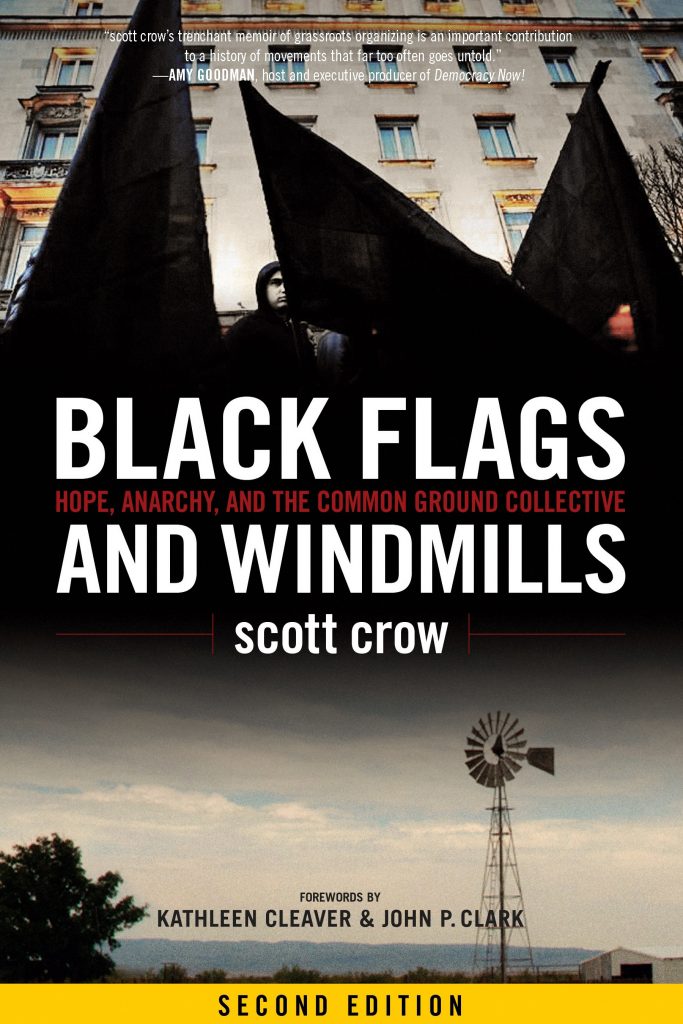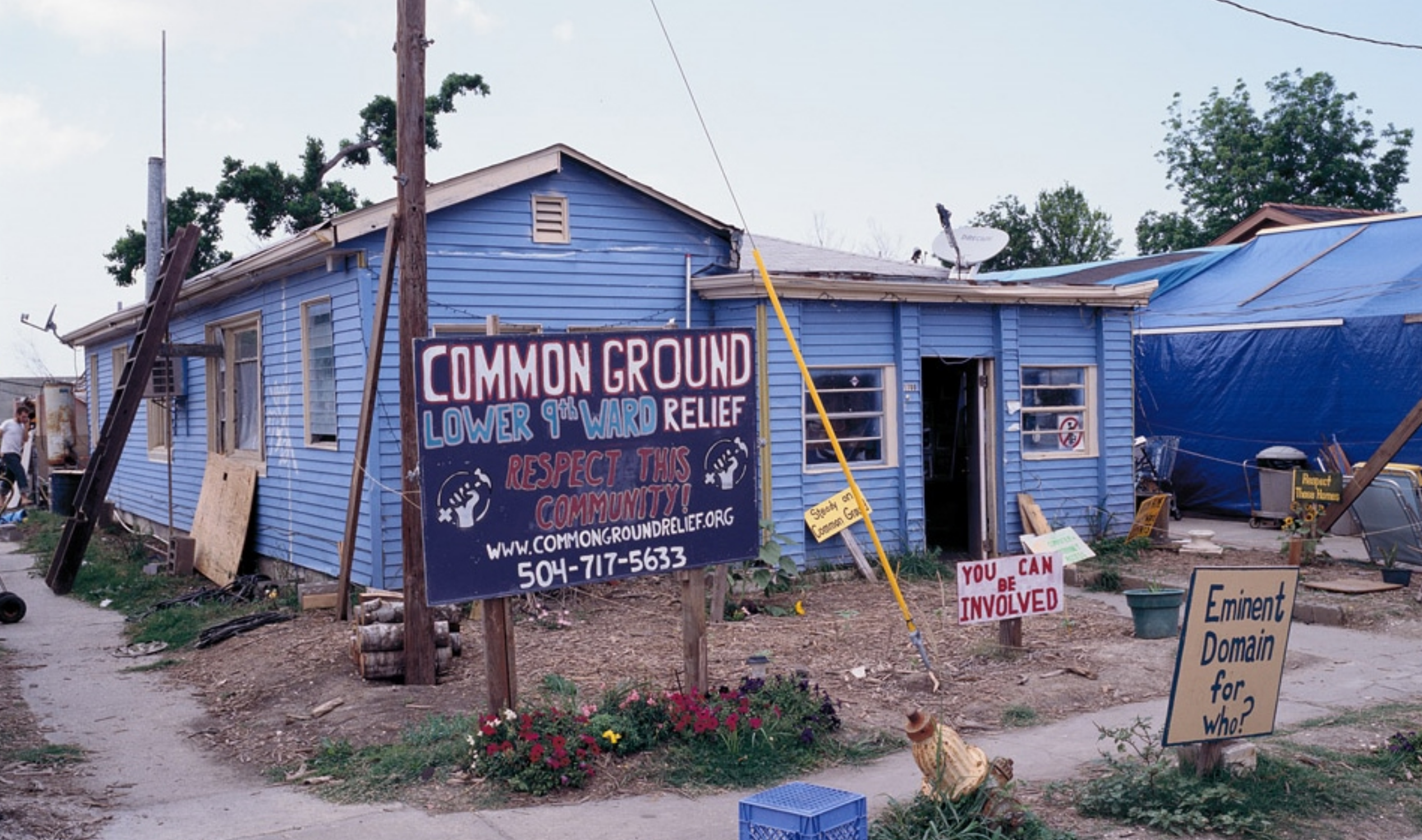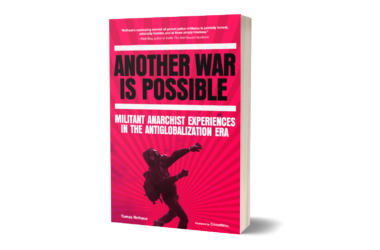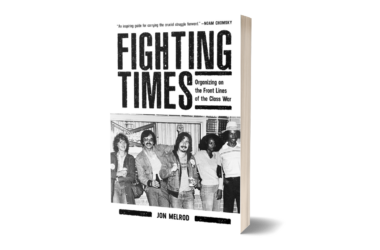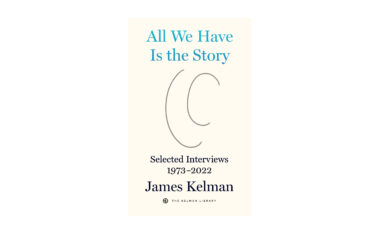Fifteen years after Hurricane Katrina, the Common Ground Collective’s uncommon success offers lessons on how to build effective mutual aid projects today.

By Shane Burley
Waging Nonviolence
August 20th, 2020
It started in Malik Rahim’s kitchen, as the waters from the broken levees continued to flow through New Orleans’ lower 9th Ward. A small group of activists from the city and Austin, Texas, including former Black Panthers, began scratching down notes and trying to figure out exactly what they could do to provide support to the neighborhoods obliterated by Hurricane Katrina.
This was in 2005, just days after the storm had battered the city and demolished the levees, overwhelming the surrounding blocks with a toxic water sludge. Services had entirely collapsed and government officials were unable, or in many cases unwilling, to intervene and support the people who had stayed to weather the storm. In this vacuum, white militias began patrolling black neighborhoods, murdering people under the guise of protecting against “looters.”
A group came together to address the growing needs in the community called the Common Ground Collective, which became an example of the type of mutual aid projects that are possible during a disaster. Using a horizontal, all-volunteer approach, the project evolved from a collection of people simply providing basic disaster relief, such as food and medicine distribution, into a fully working clinic where people could receive health care.
“As people started coming, more and more ideas started coming … but the first question was like ‘If we build a first aid station, could a first aid station become a clinic? Could a clinic become a hospital?’” said scott crow, one of the organizers who founded the Common Ground Collective and wrote the book “Black Flags and Windmills” about the experience.
“It was really like a baptism into activism, because we were growing something I had never experienced before in those early days that was so powerful.”
As this unprecedented health crisis continues around the world, which has painted our communities with uncertainty, the uncommon success of the Common Ground Collective holds some lessons for how a “liberatory approach” to organizing can provide options for survival. This means organizing that intends to build new social relationships and create a participatory alternative to the top-down institutions we rely on today.
With climate catastrophe worsening and natural disasters growing more common, people are looking for new models to meet the material needs of affected communities. The Common Ground Collective’s successes and failures provide some useful insights into how to build new, effective mutual aid projects during this crisis and the next.
A clinic of people
The Common Ground Collective began by doing food and resource distribution — working with organizations like Veterans for Peace — and began scaling up their services from there. This began with very basic health care options, which were almost totally missing at that point, including things like taking blood pressure, running diabetes testing, and checking on a range of symptoms.
The collective went forward on a three-phase, long-term strategy. This started with the immediate relief effort, then moved into creating worker cooperatives and economic initiatives and finally to rebuilding, with the hope of a green approach to construction. According to Common Ground, they created seven mobile clinics to serve the community, started shelters and offered legal support to neighborhoods still reeling both from what the flood had done and how the state responded. They eventually set up several health clinics, worker cooperatives and a free school, gave people bicycles to get around difficult roadways, worked on eviction defense, and even started building homes and community gardens.
“It was really like a baptism into activism, because we were growing something I had never experienced before in those early days that was so powerful and so effective,” said Jackie Sumell, an artist and organizer who helped run the clinic.
What set the collective apart from other mutual aid projects, was that it was founded on a liberatory framework from the beginning.
As a sprawling radical project, it became one of the largest efforts built on “liberatory” principles in decades, with around 23,000 volunteers from around the world helping to keep the project going. All told, they gutted around 3,000 buildings hit by the storm, planted 16,000 plugs of marshland grasses (which helps stabilize the land), and even put together a “bioremediation” service to remove the toxic soil and black mold that was at dangerous levels in areas hit by the flood.
In its first two years the Common Ground Collective raised a staggering $3 million — with donations from people like Michael Moore and Bruce Springsteen — which would be impressive if it had been a non-governmental organization and was unthinkable for an anarchist mutual aid project. But the people around them could see the value they had created to the community — that they were living up to their promise and offering something that the state was not able or willing to provide.
Lessons for today
Common Ground was created as a sort of trial by fire, in response to one of the worst disasters in U.S. history, so the lessons gleaned from it have resonance far beyond that moment. There is predictive power to what was learned there, and mutual aid organizers can use some of these experiences as they build their own projects today. The central concept of the collective, and what set it apart from other mutual aid projects, was that it was founded on a liberatory framework from the beginning.
“There’s definitely dual power from an anarchist perspective, there is solidarity not charity … [and] leading by asking,” crow explained. “These are three major components that are very important from the very beginning that made us different than other organizations.” “Dual power” means creating an institution that challenges the legitimacy and reach of a larger institution, such as the state and health care system, and offering it as an alternative to those larger structures.
Focusing on solidarity meant that organizers saw themselves on the same footing as those receiving resources, and they were creating a mutually reinforcing relationship where both parties felt that they benefited from a common structure of support. The third point, leading by asking, was founded on the notion that no political organizer can come into a community and decide what the people there need. Instead, people must actually ask and listen, and adapt the project to what the intersecting communities of an area actually want and need.
All of this requires a certain intentionality, an understanding of why the organizers are doing this work, beyond simple survival. For instance, in the current pandemic, those involved in mutual aid should ask whether they are doing this work to simply protect their neighborhood and the overlapping communities from infection and its consequences, or if there is an overarching reason for engaging in it. This is where the “liberatory approach” comes in. It offers a particular vision for why the work is critical and can be more than simply a stopgap for the failures of the state.
“One of the things that does apply [today] is the long-term vision of Common Ground, which was to be that social organizing force for community needs and desires and to make sure that community people were involved at every stage. That is one of the key lessons,” said Kevin Van Meter, a volunteer organizer who went to New Orleans to offer support.
When building these structures, organizers had to think about how to make them sustainable outside of the immediate crisis. If these sorts of emergencies continue, as they are likely to, then mutual aid organizations formed amid the COVID-19 outbreak will have to find a way to both give themselves some permanence and keep control of them in the communities they serve.
“[I learned that] we need to build more infrastructures. More autonomous and networked infrastructures, with liberatory potential or liberatory foundations to them,” crow said. “That we needed more of those so that when the next disaster happened in those communities, we were ready for it.”
Previous Coverage

Repression against grassroots hurricane relief lingers in New Orleans
One of the commonalities shared by the post-Hurricane Katrina disaster area of New Orleans and the ongoing COVID-19 crisis is the climate of fear, which can be either disempowering or motivating depending on its tone. This was one of the key lessons that organizers in New Orleans took from building something in a place with an uncertain future — that fear is a bad place to make decisions from. It can stop rational thinking and can make problems feel insurmountable. They learned that it is better to acknowledge that everyone is afraid and then start making attempts to move beyond the paralysis that those feelings can sometimes create.
“When the very idea of Common Ground was coming together, we had a whole new way of existing that was so different, special and effective,” Sumell said. “Then the nonprofit industrial complex, money and capital came in and said ‘Now it needs to look like this.’ And it destroyed what we thought was beautiful.”
As it started to leave its initial phases and grow, Common Ground eventually became a non-profit. Many of the founders became critical of the form it took in later years because they say it lost some of the core features that made it such a breakthrough. Sumell used the analogy of raising okra in a garden, which the tender has to work hard to avoid becoming too large too fast.
The argument here is simple: rather than turning mutual aid projects over to large global organizations, they should be accountable to the communities they are in and at a scale where people can still control them without relying on a professional class. Then they can support other local projects to work together on a large scale, but without missing the essential core that made it a direct action project to begin with.
Post-crisis mutual aid
One of the lessons of Common Ground is that the particular crisis that inspired the mutual aid project should not determine its life. The needs that mutual aid organizations hope to fulfill are particularly obvious amidst a disaster, such as a hurricane or a global infectious disease pandemic, but those needs were already there. The communities in the Algiers neighborhood of New Orleans were already lacking access to comprehensive health care, affordable food and housing, and other basic necessities, and if this “liberatory approach” is at the center of a mutual aid project, then there is a much longer-term vision at play.
Common Ground still exists today, with the Common Ground Health Clinic operating in Algiers and Common Ground projects like the New Orleans Women’s & Children’s Shelter and the Common Ground Legal Clinic, now an affiliate of the Louisiana Civil Justice Center, still providing support to the community. Many of the people involved in the mutual aid projects of the collective are still fighting to build dual power around the world. Many other groups built on the legacy they provided, such as Mutual Aid Disaster Relief, a decentralized organization of mutual aid organizers that uses many of the lessons of the Common Ground Collective to do horizontally structured disaster relief.
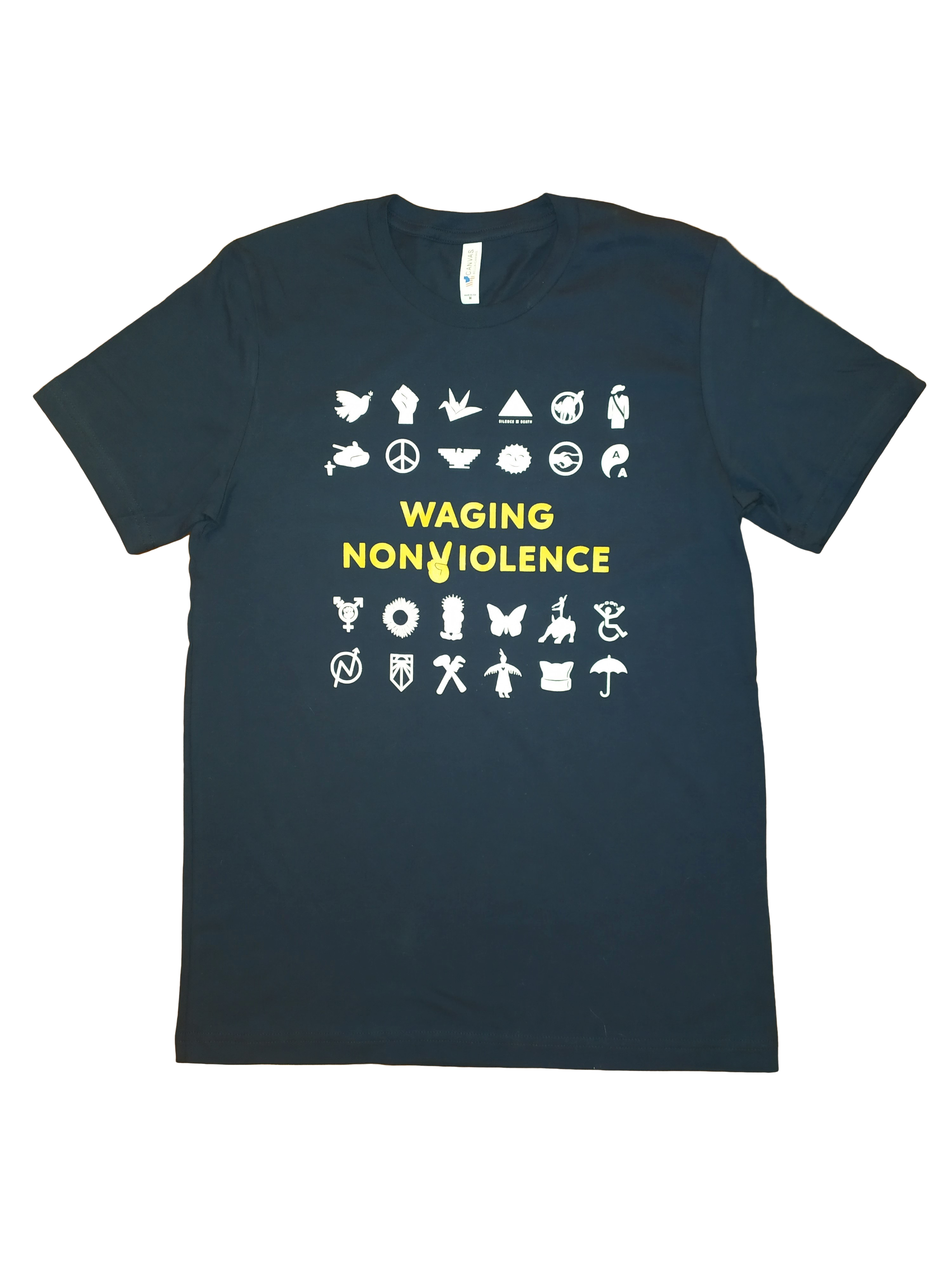
Support Us
Like the movements we cover, Waging Nonviolence depends on grassroots support. Become a sustaining member today and get a WNV T-shirt.
“Common Ground was successful because the entire country’s attention was on New Orleans after the storm,” Van Meter said. “As long as thousands are participating in General Assemblies — and thousands are turning up to provide relief efforts in New Orleans — many of the limitations and barriers to the organizing efforts can be overcome.”
This is both a criticism and advantage, but one that becomes even more distinct as the upsurge of coronavirus cases is on people’s minds. While everyone’s attention is centered on the crisis, it can be easy to recruit. The difficulty is in maintaining that participation in the months and years afterward.
As we reach the peak of the coronavirus, the ongoing impact on the communities most affected is going to be staggering. In response, the infrastructure of the mutual aid networks that formed to support people through the crisis will have to continue and, in many ways, evolve. People who are out of work are going to face back rent, layoffs and unemployment will increase, bills for health care will become due, and state budget crises will likely lead to brutal austerity. So those mutual aid networks that have been created will need to offer a new infrastructure of solidarity as the real needs of the community change. Listening to the community and adapting may be the most prescient legacy of the Common Ground Collective.
Shane Burley
Shane Burley is a writer and filmmaker based in Portland, Oregon. He is the author of “Fascism Today: What It Is and How to End It” (AK Press). His work as appeared in places such as Jacobin, AlterNet, In These Times, Political Research Associates, Waging Nonviolence, Labor Notes, ThinkProgress, ROAR Magazine and Upping the Anti. Follow him on Twitter: @shane_burley1.
